Bosch KDN 59AW30N User Manual
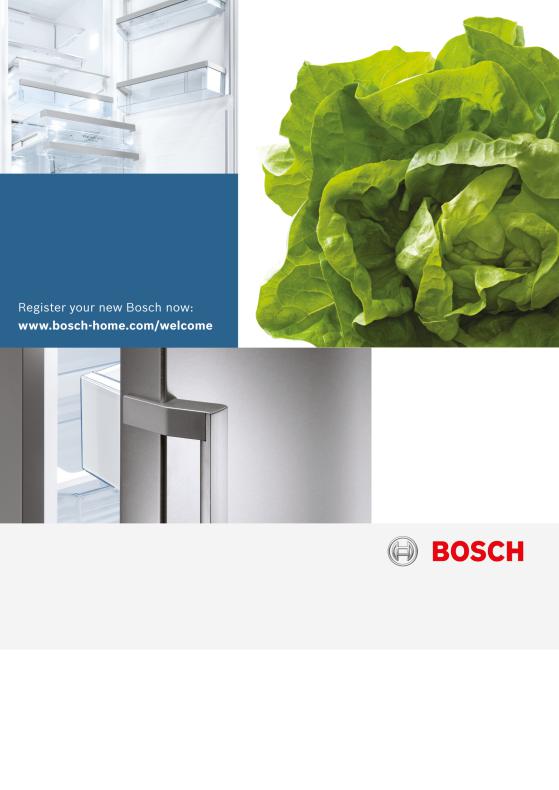
Fridge-freezer
Soğutucu/Dondurucu kombine cihazı Холодильно-морозильная комбинация KDN
en User manual
tr Kullanım kılavuzu
ru Инструкция по эксплуатации
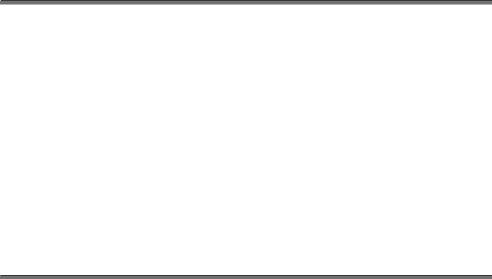
en Table of Contents |
|
Safety and warning information ............ |
4 |
Information concerning disposal .......... |
5 |
Scope of delivery .................................... |
6 |
Ambient temperature and ventilation .. |
6 |
Connecting the appliance ..................... |
7 |
Getting to know your appliance ........... |
8 |
Switching the appliance on ................... |
9 |
Setting the temperature ......................... |
9 |
Alarm function ...................................... |
10 |
Usable capacity .................................... |
10 |
Refrigerator compartment .................. |
11 |
Super cooling ....................................... |
11 |
Freezer compartment .......................... |
12 |
Max. freezing capacity ........................ |
12 |
Freezing and storing food .................. |
12 |
Freezing fresh food ............................. |
12 |
Super freezing ...................................... |
13 |
Thawing frozen food ............................ |
14 |
Interior fittings ....................................... |
14 |
Switching off and disconnecting |
|
the appliance ........................................ |
15 |
Defrosting .............................................. |
15 |
Cleaning the appliance ....................... |
15 |
Light (LED) ............................................ |
16 |
Tips for saving energy ........................ |
16 |
Operating noises ................................. |
17 |
Eliminating minor faults yourself ....... |
17 |
Customer service ................................. |
20 |
tr İçindekiler |
|
Güvenlik ve ikaz bilgileri ..................... |
21 |
Giderme bilgileri ................................... |
23 |
Teslimat kapsamı ................................. |
23 |
Mekan sıcaklığına ve havalandırmaya |
|
dikkat edilmelidir .................................. |
24 |
Cihazın elektrik şebekesine |
|
bağlanması ............................................ |
24 |
Cihaz özelliklerinin öğrenilmesi ......... |
25 |
Cihazın devreye sokulması ................ |
26 |
Sıcaklık derecesinin ayarlanması ...... |
26 |
Alarm fonksiyonu ................................. |
27 |
Kullanılabilen hacim ............................. |
27 |
Soğutucu bölmesi ................................ |
28 |
Süper soğutma ..................................... |
28 |
Dondurucu bölmesi ............................. |
29 |
Azami dondurma kapasitesi .............. |
29 |
Besinlerin dondurulması ve |
|
depolanması ......................................... |
29 |
Taze besinlerin dondurulması ........... |
29 |
Süper dondurma .................................. |
30 |
Dondurulmuş besinlerin buzunun |
|
çözülmesi .............................................. |
31 |
Donanım ................................................ |
31 |
Cihazın kapatılması, cihazın tamamen |
|
kapatılması ............................................ |
33 |
Cihazın buzunun çözülmesi ............... |
33 |
Cihazın temizlenmesi .......................... |
33 |
Aydınlatma (LED) ................................. |
34 |
Enerji tasarrufu ..................................... |
34 |
Çalışma sesleri ..................................... |
35 |
Basit hataları kendiniz |
|
giderebilirsiniz ....................................... |
35 |
Yetkili servis .......................................... |
38 |

ru Coдepжaниe |
|
Укaзaния пo бeзoпacнocти |
|
и пpeдyпpeждeния .............................. |
39 |
Укaзaния пo yтилизaции ................... |
41 |
Oбъeм пocтaвки .................................. |
42 |
Teмпepaтypa oкpyжaющeй |
|
cpeды и вeнтиляция ........................... |
42 |
Подключение бытового прибора ... |
43 |
Знакомство с бытовым прибором . 44 |
|
Включение бытового прибора ....... |
45 |
Уcтaнoвкa тeмпepaтypы .................... |
45 |
Предупредительная функция .......... |
46 |
Пoлeзный oбъeм ................................. |
47 |
Xoлoдильнoe oтдeлeниe ................... |
47 |
Cyпepoxлaждeниe .............................. |
48 |
Mopoзильнoe oтдeлeниe .................. |
49 |
Maкc. пpoизвoдитeльнocть |
|
зaмopaживaния ................................... |
49 |
Зaмopaживaниe и xpaнeниe |
|
пpoдyктoв ............................................. |
49 |
Зaмopaживaниe cвeжиx |
|
пpoдyктoв питaния ............................. |
50 |
Cyпepзaмopaживaниe ....................... |
51 |
Paзмopaживaниe пpoдyктoв ............ |
51 |
Cпeциaльнoe ocнaщeниe ................. |
52 |
Bыключeниe прибора и вывoд |
|
eгo из экcплyaтaции .......................... |
53 |
Paзмopaживaниe ................................ |
54 |
Чистка бытового прибора ................ |
54 |
Ocвeщeниe (нa cвeтoдиoдax) .......... |
55 |
Kaк cэкoнoмить элeктpoэнepгию .. |
55 |
Paбoчиe шyмы ..................................... |
56 |
Caмocтoятeльнoe ycтpaнeниe |
|
мeлкиx нeиcпpaвнocтeй ................... |
58 |
Cлyжбa cepвиca ................................. |
62 |

en
Safety and warning information
Before you switch ON the appliance
Please read the operating and installation instructions carefully! They contain important information on how to install, use and maintain the appliance.
The manufacturer is not liable if you fail to comply with the instructions and warnings. Retain all documents for subsequent use or for the next owner.
Technical safety
This appliance contains a small quantity of environmentally-friendly but flammable R600a refrigerant. Ensure that the tubing of the refrigerant circuit is not damaged during transportation and installation.
Leaking refrigerant may cause eye injuries or ignite.
If damage has occurred
■Keep naked flames and/or ignition sources away from the appliance,
■thoroughly ventilate the room for several minutes,
■switch off the appliance and pull out the mains plug,
■inform customer service.
The more refrigerant an appliance contains, the larger the room must be in which the appliance is situated. Leaking refrigerant can form a flammable gas-air mixture in rooms which are too small. The room must be at least 1 m³ per 8 g of refrigerant. The amount of refrigerant in your appliance is indicated on the rating plate inside the appliance.
If the power cord of this appliance is damaged, it must be replaced by the manufacturer, customer service or a similarly qualified person. Improper installations and repairs may put the user at considerable risk.
Repairs may be performed by the manufacturer, customer service or a similarly qualified person only.
Only original parts supplied by the manufacturer may be used. The manufacturer guarantees that only these parts satisfy the safety requirements.
A extension cable may be purchased from customer service only.
Important information when using the appliance
■Never use electrical appliances inside the appliance (e.g. heater, electric ice maker, etc.). Risk of explosion!
■Never use a steam cleaner to defrost or clean the appliance! The steam may penetrate electrical parts
and cause a short-circuit. Risk of electric shock!
■Do not use pointed or sharp-edged implements to remove frost or layers of ice. You could damage
the refrigerant tubing. Leaking refrigerant may ignite or cause eye injuries.
■Do not store products which contain flammable propellants (e.g. spray cans) or explosive substances
in the appliance. Risk of explosion!
■Do not stand or support yourself on the base, drawers or doors, etc.
4

■Before defrosting and cleaning
the appliance, pull out the mains plug or switch off the fuse.
Do not pull out the mains plug by tugging the cable.
■Bottles which contain a high percentage of alcohol must be sealed and stored in an upright position.
■Keep plastic parts and the door seal free of oil and grease. Otherwise, parts and door seal will become porous.
■Never cover or block the ventilation openings for the appliance.
■People (childern incl.) who have limited physical, sensory or mental abilities or inadequate knowledge must not use this appliance unless they are supervised or given meticulous instructions.
■Do not store bottled or canned drinks (especially carbonated drinks)
in the freezer compartment. Bottles and cans may explode!
■Never put frozen food straight from the freezer compartment into your mouth.
Risk of low-temperature burns!
■Avoid prolonged touching of frozen food, ice or the evaporator pipes, etc. Risk of low-temperature burns!
Children in the household
■Keep children away from packaging and its parts.
Danger of suffocation from folding cartons and plastic film!
■Do not allow children to play with the appliance!
■If the appliance features a lock: keep the key out of the reach of children!
en
General regulations
The appliance is suitable
■for refrigerating and freezing food,
■for making ice.
This appliance is intended for use in the home and the home environment.
The appliance is suppressed according to EU Directive 2004/108/EC.
The refrigeration circuit has been checked for leaks.
This product complies with the relevant safety regulations for electrical appliances (EN 60335-2-24).
Information concerning disposal
* Disposal of packaging
The packaging protects your appliance from damage during transit. All utilised materials are environmentally safe and recyclable. Please help us by disposing of the packaging in an environmentally friendly manner.
Please ask your dealer or inquire at your local authority about current means of disposal.
5
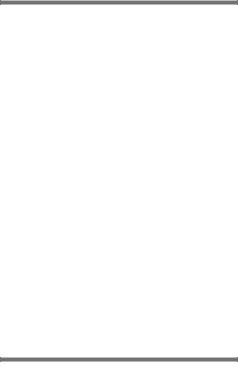
en
* Disposal of your old appliance
Old appliances are not worthless rubbish! Valuable raw materials can be reclaimed by recycling old appliances.
according to the European guideline 2002/96/EC on waste electrical and electronic equipment – WEEE. The directive specifies the framework for an
EU-wide valid return and re-use of old appliances.This appliance is identified
ã=Warning
Redundant appliances
1.Pull out the mains plug.
2.Cut off the power cord and discard with the mains plug.
3.Do not take out the trays and receptacles: children are
therefore prevented from climbing in!
4.Do not allow children to play with the appliance once it has spent its useful life. Danger of suffocation!
Refrigerators contain refrigerant
and gases in the insulation. Refrigerant and gases must be disposed
of professionally. Ensure that tubing
of the refrigerant circuit is not damaged prior to proper disposal.
Scope of delivery
After unpacking all parts, check for any damage in transit.
If you have any complaints, please contact the dealer from whom you purchased the appliance or our customer service.
The delivery consists of the following parts:
■Free-standing appliance
■Bag containing installation materials
■Interior fittings (depending on model)
■Operating instructions
■Installation manual
■Customer service booklet
■Warranty enclosure
■Information on the energy consumption and noises
Ambient temperature and ventilation
Ambient temperature
The appliance is designed for a specific climate class. Depending on the climate class, the appliance can be operated at the following temperatures.
The climate class can be found on the rating plate. Fig. -
Climate class |
Permitted ambient |
|
temperature |
SN |
+10 °C to 32 °C |
N |
+16 °C to 32 °C |
ST |
+16 °C to 38 °C |
T |
+16 °C to 43 °C |
6

Note
The appliance is fully functional within the room temperature limits
of the indicated climatic class. If an appliance of climatic class SN
is operated at colder room temperatures, the appliance will not be damaged up to a temperature of +5 °C.
Ventilation
Fig. 3
The air on the rear panel and on the side panels of the appliance heats up. Conduction of the heated air must
not be obstructed. Otherwise,
the refrigerating unit must work harder. This increases power consumption. Therefore: Never cover or block
the ventilation openings!
Connecting the appliance
After installing the appliance, wait at least 1 hour until the appliance is switched on. During transportation the oil in
the compressor may have flowed into the refrigeration system.
Before switching on the appliance for the first time, clean the interior of
the appliance (see chapter “Cleaning the appliance”).
en
Electrical connection
The socket must be near the appliance and also freely accessible following installation of the appliance.
The appliance complies with the protection class I. Connect the appliance to 220–240 V/50 Hz alternating current via a correctly installed socket with protective conductor. The socket must be fused with a 10 to 16 A fuse.
For appliances operated in nonEuropean countries, check whether the stated voltage and current type match the values of your mains supply match the values of the mains supply. This information can be found on the rating plate. Fig. -
ã=Warning
Never connect the appliance
to electronic energy saver plugs.
Our appliances can be used with mains and sine-controlled inverters. Mainscontrolled inverters are used
for photovoltaic systems which
are connected directly to the national grid. Sine-controlled inverters must be used for isolated applications (e.g. on ships or in mountain lodges) which are not connected directly to the national grid.
7
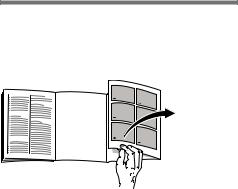
en
Getting to know your appliance
Please fold out the illustrated last page. These operating instructions refer
to several models.
The features of the models may vary. The diagrams may differ.
Fig. 1
1-7 Controls
8Light switch for freezer compartment
9On/Off button
10Fast freezer compartment
11Shelf in the freezer compartment
12Light (LED)
13Light switch for refrigerator compartment
14Extendable glass shelf
15Air outlet opening
16Shelf in the refrigerator compartment
17Cold storage compartment
18Vegetable container
19Ventilation opening
20Height-adjustable feet
21Door shelf
22Ice maker
23Ice cube container
24Butter and cheese compartment
25Egg rack
26Door container
27Door shelf
28Bottle holder
29Shelf for large bottles
AFreezer compartment
BRefrigerator compartment
Controls
Fig. 2
1Alarm button
Used to switch off the warning signal, see chapter “Alarm function”.
2“Super” button refrigerator
compartment
Switches super cooling on and off.
3Refrigerator compartment temperature selection button
The button sets the temperature in the refrigerator compartment.
4Temperature display refrigerator compartment
The numbers correspond to the set refrigerator
compartment temperatures in °C.
5“Super” button (freezer compartment)
Switches super freezing on and off.
6Temperature selection button freezer compartment
The button sets the temperature in the freezer compartment.
7Temperature display freezer
compartment
The numbers correspond
to the set freezer compartment temperatures in °C.
8

Note
When the appliance is not used for some time, the display on the fascia switches to ECO mode.
en
Setting
the temperature
Fig. 2
Switching
the appliance on
1.Press the On/Off button 1/9. Warning signal is emitted.
2.Press the alarm button 2/1. Warning signal stops. 2/1 remains lit untilThe alarm button
the set temperature has been reached.
The factory has recommended the following temperatures:
■Refrigerator compartment: +4 °C
■Freezer compartment: –18 °C
Operating tips
■When the appliance has been switched on, it may take several hours until the set temperatures have been reached.
■The fully automatic No Frost system ensures that the freezer compartment remains free of ice. Defrosting is no longer required.
■The sides of the housing are sometimes heated slightly. This prevents condensation in the area of the door seal.
■If the freezer compartment door cannot be immediately re-opened after it has been closed, wait until the resulting low pressure has equalised.
Refrigerator compartment
The temperature can be set from +2 °C to +8 °C.
Keep pressing temperature setting button 3 until the required refrigerator compartment temperature is set.
The value last selected is saved. The set temperature is indicated on temperature display 4.
We recommend a factory setting
of +4 °C in the refrigerator compartment.
Perishable food should not be stored above +4 °C.
Freezer compartment
The temperature can be set from -16 °C to -24 °C.
Keep pressing temperature setting button 6 until the required freezer compartment temperature is set.
The value last selected is saved.
The set temperature is indicated on temperature display 7.
We recommend a factory setting of - 18 °C in the freezer compartment.
9
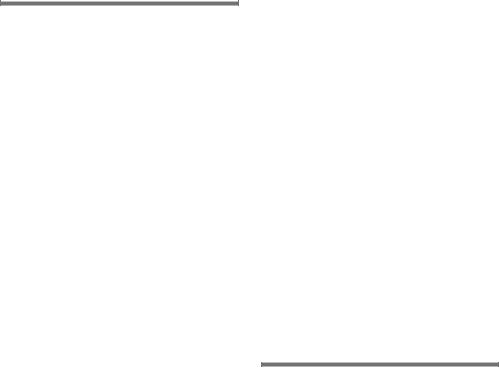
en
Alarm function
The warning signal switches on if
the freezer compartment is too warm.
Switching off the warning signal
Fig. 2
Press the “alarm” button 1 to switch off the warning signal.
Door alarm
The door alarm switches on if an appliance door is left open for longer than one minute. Close the door to switch off the warning signal.
Temperature alarm
The temperature alam switches on if the freezer compartment is too warm.
Alarm |
Temperature |
Explanation |
button |
display |
|
illumina |
flashes |
Temperature alarm: |
tes |
|
Frozen food is |
|
|
|
|
|
not at risk of |
|
|
thawing. |
flashes |
flashes |
Thaw alarm: |
|
|
Frozen food is |
|
|
at risk of thawing. |
flashes |
illuminates |
Thaw alarm: |
|
|
At some time |
|
|
the freezer |
|
|
compartment was |
|
|
too warm. Frozen |
|
|
food is at risk |
|
|
of thawing. |
Temperature warning
The alarm may switch on without any risk to the frozen food:
■when the appliance is switched on,
■when large quantities of fresh food are placed in the appliance,
■if the freezer compartment door is open too long.
Thaw warning
If taste, odour and appearance remain unchanged, the food can be boiled
or fried and then refrozen. No longer store the frozen produce for the max. storage period.
Note
Do not refreeze thawing or thawed food. It can only be refrozen when it has been used to prepare a ready meal (boiled or fried).
No longer store the frozen produce for the max. storage period.
Usable capacity
Information on the usable capacity can be found inside your appliance on
the rating plate. Fig. -
Fully utilising the freezer volume
The maximum amount of food can be placed in the freezer by removing the following fittings.
Removing the fittings
■The door shelf can be taken out. Fig. 4
■If appliances feature an ice maker, the latter can be taken out. Fig. 5
10

Refrigerator compartment
The refrigerator compartment is the ideal storage location for ready meals, cakes and pastries, preserved food, condensed milk, hard cheese, fruit and vegetables sensitive to cold as well as tropical fruit.
Note when loading products
Wrap or cover food before placing in the appliance. This will retain the aroma, colour and freshness
of the food. In addition, flavours will not be transferred between foods
and the plastic parts will not become discoloured.
Note
Avoid contact between food and rear panel. Otherwise the air circulation will be impaired.
Food or packaging could freeze to the rear panel.
Note the chill zones in
the refrigerator compartment!
The air circulation in the refrigerator compartment creates different chill zones:
■Coldest zone
is on the rear panel inside
the appliance and on the cold storage compartment. Fig. 1/17
Note
Store perishable food e.g. fish, sausage, meat in the coldest zones.
en
■Warmest zone
is at the very top of the door.
Note
Store e.g. cheese and butter in the warmest zone. When served,
the cheese will not have lost its flavour and the butter will be easy to spread.
Super cooling
Super cooling sets the refrigerator temperature to the coldest temperature setting for approx. 6 hours. Then
the appliance automatically switches to the temperature set prior to super cooling mode.
Switch on super cooling mode, e.g.
■before placing large quantities of food in the refrigerator compartment.
■for the fast cooling of drinks.
Switching on and off
Fig. 2
Press “super” button 2.
The button is lit when super cooling is switched on.
11
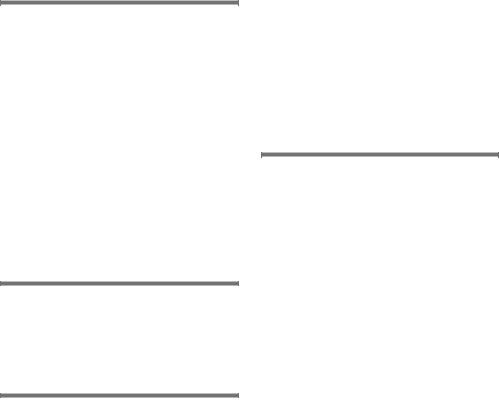
en
Freezer compartment
Use the freezer compartment
■To store deep-frozen food.
■To make ice cubes.
■To freeze food.
Note
Ensure that the freezer compartment door has been closed properly. If the door is open, the frozen food will thaw. The freezer compartment will
become covered in thick ice. Also: waste of energy due to high power consumption!
Max. freezing capacity
Information about the max. freezing capacity within 24 hours can be found on the rating plate. Fig. -
Freezing and storing food
Purchasing frozen food
■Packaging must not be damaged.
■Use by the “use by” date.
■Temperature in the supermarket freezer must be -18 °C or lower.
■If possible, transport deep-frozen food in an insulated bag and place quickly in the freezer compartment.
Note when loading products
Freeze large quantities of food in the fast freezer compartment where food freezes particularly quickly and therefore also gently.
Food which is already frozen must not come into contact with the food which is to be frozen.
Freezing fresh food
Freeze fresh and undamaged food only.
To retain the best possible nutritional value, flavour and colour, vegetables should be blanched before freezing. Aubergines, peppers, zucchini and asparagus do not require blanching.
Literature on freezing and blanching can be found in bookshops.
Note
Keep food which is to be frozen away from food which is already frozen.
■The following foods are suitable for freezing:
Cakes and pastries, fish and seafood, meat, game, poultry, vegetables, fruit, herbs, eggs without shells, dairy products such as cheese, butter and quark, ready meals and leftovers such as soups, stews, cooked meat and fish, potato dishes, soufflés and desserts.
■The following foods are not suitable for freezing:
Types of vegetables, which are usually consumed raw, such as lettuce or radishes, eggs in shells, grapes, whole apples, pears and peaches, hard-boiled eggs, yoghurt, soured milk, sour cream, crème fraîche and mayonnaise.
12

Packing frozen food
To prevent food from losing its flavour or drying out, place in airtight containers.
1.Place food in packaging.
2.Remove air.
3.Seal the wrapping.
4.Label packaging with contents and date of freezing.
Suitable packaging:
Plastic film, tubular film
made of polyethylene, aluminium foil, freezer containers.
These products are available from specialist outlets.
Unsuitable packaging:
Wrapping paper, greaseproof paper, cellophane, bin liners and used shopping bags.
Items suitable for sealing packaged food:
Rubber bands, plastic clips, string, coldresistant adhesive tape, etc.
Bags and tubular film
made of polyethylene can be sealed with a film heat sealer.
Shelf life of frozen food
Storage duration depends on the type of food.
At a temperature of -18 °C:
■Fish, sausage, ready meals and cakes and pastries:
up to 6 months
■Cheese, poultry and meat: up to 8 months
■Vegetables and fruit: up to 12 months
en
Super freezing
Food should be frozen solid as quickly as possible in order to retain vitamins, nutritional value, appearance and flavour.
Several hours before placing fresh food in the freezer compartment, switch on super freezing to prevent an unwanted temperature rise.
As a rule, 4-6 hours is adequate.
This appliance runs constantly
and the freezer compartment drops to a very low temperature.
If the max. freezing capacity is to be used, super freezing must be switched on for 24 hours before the fresh produce is placed in the freezer compartment.
Smaller quantities of food (up to 2 kg) can be frozen without “super freezing”.
Note
When super freezing is switched on, increased operating noises may occur.
Switching on and off
Fig. 2
Press “super” button 5.
If the super freezing has been switched on the button is lit.
Super freezing automatically switches off after approx. 2½ days.
13
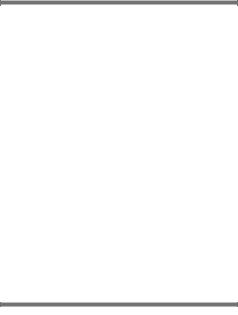
en
Thawing frozen food
Depending on the type and application, select one of the following options:
■at room temperature
■in the refrigerator
■in an electric oven, with/without fan assisted hot-air
■in the microwave
ã=Caution
Do not refreeze thawing or thawed food. Only ready meals (boiled or fried) may be refrozen.
No longer store the frozen produce for the max. storage period.
Interior fittings
You can reposition the shelves inside the appliance and the door shelves as required:
■Pull shelf forwards, lower and swing out to the side.
■Raise the door shelf and remove. Fig.
4
Special features
(not all models)
Taking out the extendable glass shelf
Fig. 1/14
The glass shelf can be removed for cleaning. To do this, pull out shelf, lift at the front and take out.
Bottle shelf
Fig. 6 A/B
Bottles can be stored securely on the bottle shelf.
Cold storage compartment
Fig. 1/17
The cold storage compartment has lower temperatures than the refrigerator compartment. Even temperatures below 0 °C may occur.
Ideal for storing fish, meat and sausage. Not suitable for lettuce and vegetables and produce sensitive to cold.
Vegetable container with humidity controller
Fig. 7
To create the optimum storage climate for vegetables, salad and fruit, the air humidity in vegetable container can be regulated according to the quantity stored.
Smaller quantities of food – slide the regulator to the left.
Larger quantities of food – slide the regulator to the right.
Drawer insert
Fig. 9
The insert can be taken out.
Door container
Fig. 1/26
Ideal for the storage of sweets, spices and dressings. Also suitable for cosmetic products.
Bottle holder
Fig. 1/28
The bottle holder prevents bottles from falling over when the door is opened and closed.
14
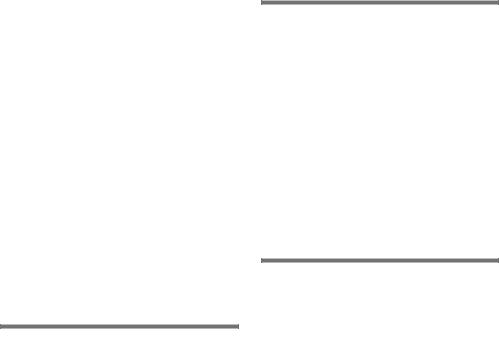
Ice maker
Fig. 8
1.Take out water container and fill with water up to the mark.
2.Carefully empty water into the storage container via the filler opening. Ensure that the water does not run into or splash onto the storage container. Otherwise, ice cubes could freeze to each other or to the container.
3.When the ice cubes are frozen, press lever down and release.
The ice cubes loosen and fall into the storage container.
4.Remove ice cubes from the storage container. The ice cubes should be removed regularly from the storage container to prevent them from freezing to each other.
Switching off and disconnecting the appliance
Switching off the appliance
Fig. 1
Press the On/Off button 9. Refrigerating unit and light switch off.
Disconnecting the appliance
If you do not use the appliance for a prolonged period:
1.Switch off the appliance.
2.Pull out mains plug or switch off fuse.
3.Clean the appliance.
4.Leave the appliance door open.
en
Defrosting
Refrigerator compartment
Defrosting is actuated automatically.
The condensation runs through
the drainage hole into an evaporation pan on the rear of the appliance.
Freezer compartment
The fully automatic No Frost system ensures that the freezer compartment remains free of ice. Defrosting is no longer required.
Cleaning the appliance
ã=Caution
■Do not use abrasive, chloride or acidic cleaning agents or solvents.
■Do not use scouring or abrasive sponges.
The metallic surfaces could corrode.
■Never clean shelves and containers in the dishwasher.
The parts may warp!
Water used for cleaning must not drip into the
■slots in the front base area in the freezer compartment,
■controls,
■and light.
15
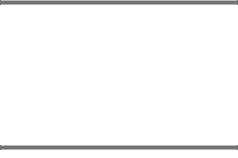
en
Proceed as follows:
1.Before cleaning: Switch the appliance off.
2.Pull out the mains plug or switch off the fuse.
3.Take out the frozen food and store in a cool location. Place the ice pack (if enclosed) on the food.
4.Clean the appliance with a soft cloth, lukewarm water and a little pH neutral washing-up liquid. The rinsing water must not run into the light.
5.Wipe the door seal with clear water only and then wipe dry thoroughly.
6.After cleaning reconnect and switch the appliance back on.
7.Put the frozen food back in the freezer compartment.
Interior fittings
All variable parts of the appliance can be taken out for cleaning.
Take out glass shelves
Pull the glass shelves forwards and take out.
Take out shelves in the door
Fig. 4
Lift shelves upwards and take out.
Taking glass shelf out of chiller compartment
Fig. *
Press the holder upwards and take out the glass shelf.
Note
Do not clean glass shelf of the cold storage compartment under running water.
Taking out glass shelf above vegetable drawer
Fig. +
Before the glass shelf can be taken out, pull out the vegetable drawer.
The glass shelf can be taken apart for cleaning.
Light (LED)
Your appliance features a maintenancefree LED light.
These lights may be repaired
by customer service or authorised technicians only.
Tips for saving energy
■Install the appliance in a dry, well ventilated room! The appliance should not be installed in direct sunlight
or near a heat source (e.g. radiator, cooker).
If required, use an insulating plate.
■Do not block the ventilation openings in the appliance.
■Allow warm food and drinks to cool down before placing in the appliance.
■Thaw frozen food in the refrigerator compartment and use the low temperature of the frozen food to cool refrigerated food.
■Open the appliance as briefly as possible.
■Ensure that the freezer compartment door is always closed properly.
■Occasionally clean the rear of the appliance to prevent an
increased power consumption.
16
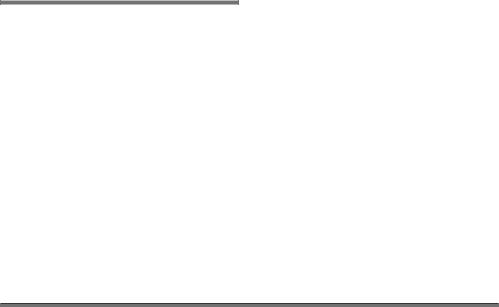
Operating noises
Quite normal noises
Droning
Motors are running (e.g. refrigerating units, fan).
Bubbling, humming or gurgling noises
Refrigerant is flowing through the tubing.
Clicking
Motor, switches or solenoid valves are switching on/off.
Cracking
Automatic defrosting is running.
en
Preventing noises
The appliance is not level
Please align the appliance with a spirit level. Use the height-adjustable feet or place packing underneath them.
The appliance is not free-standing
Please move the appliance away from adjacent units or appliances.
Containers or storage areas wobble or stick
Please check the removable parts and re-insert them correctly if required.
Bottles or receptacles are touching each other
Move the bottles or receptacles slightly away from each other.
Eliminating minor faults yourself
Before you call customer service:
Please check whether you can eliminate the fault yourself based on the following information.
Customer service will charge you for advice – even if the appliance is still under guarantee!
Fault |
Possible cause |
Remedial action |
|
|
|
Temperature differs |
|
In some cases it is adequate |
greatly from the set |
|
to switch off the appliance |
value. |
|
for 5 minutes. |
|
|
If the temperature is too high wait |
|
|
a few hours and check whether |
|
|
the temperature has approached |
|
|
the set value. |
|
|
If the temperature is too low check |
|
|
the temperature again the next day. |
|
|
|
17
en
Fault |
Possible cause |
Remedial action |
|
|
|
The light |
The LED light |
See chapter “Light (LED)” section. |
does not function. |
is defective. |
|
|
|
|
|
Appliance was open |
When the appliance is closed |
|
too long. |
and opened, the light is on again. |
|
Light is switched off |
|
|
after approx. 10 min. |
|
|
|
|
Controls have reduced |
When the appliance is |
As soon as the appliance is again |
luminosity. |
not used for some |
used, e.g. the door is opened, |
|
time, the display on |
the display switches back to normal |
|
the fascia switches |
illumination. |
|
to energy saving |
|
|
mode. |
|
|
|
|
Displays |
Power failure; the fuse |
Connect mains plug. Check whether |
do not illuminate. |
has been switched off; |
the power is on, check the fuses. |
|
the mains plug |
|
|
has not been inserted |
|
|
properly. |
|
|
|
|
Warning signal |
Fault – the freezer |
To switch off the warning signal, |
sounds. |
compartment is too |
press the alarm button 1. |
The alarm button is lit. |
warm! |
|
Fig. 2/1 |
Appliance is open. |
Close the appliance. |
|
|
|
|
Ventilation openings |
Ensure that there is adequate |
|
have been covered. |
ventilation. |
|
|
|
|
Too much food was |
Do not exceed max. freezing |
|
placed in the freezer |
capacity. |
|
compartment at once. |
|
|
|
|
|
|
When the fault has been eliminated, |
|
|
the alarm button goes out shortly |
|
|
afterwards. |
|
|
|
18
en
Fault |
Possible cause |
Remedial action |
|
|
|
|
|
Warning signal |
Fault – the freezer |
To switch off the warning signal, |
|
sounds. |
compartment is too |
press the alarm button 1. Alarm |
|
Alarm button flashes. |
warm! |
button stops flashing. |
|
Fig. 2/1 |
Frozen food is at risk! |
Note |
|
|
|
Frozen food which has started |
|
|
|
thawing or which has thawed can be |
|
|
|
refrozen if meat and fish were above |
|
|
|
+3 °C for not more than one day |
|
|
|
or other frozen food for not more |
|
|
|
than three days. |
|
|
|
If taste, odour and appearance have |
|
|
|
not changed, the food can be boiled |
|
|
|
or fried and then refrozen. |
|
|
|
No longer store the frozen produce |
|
|
|
for the max. storage period. |
|
|
|
|
|
|
Appliance is open. |
Close the appliance. |
|
|
|
|
|
|
Ventilation openings |
Ensure that there is adequate |
|
|
have been covered. |
ventilation. |
|
|
|
|
|
|
Too much food was |
Do not exceed max. freezing |
|
|
placed in the freezer |
capacity. |
|
|
compartment at once. |
|
|
|
|
|
|
|
|
When the fault has been eliminated, |
|
|
|
the alarm button goes out shortly |
|
|
|
afterwards. |
|
|
|
|
|
The temperature in |
Appliance opened |
Do not open the appliance |
|
the freezer |
frequently. |
unnecessarily. |
|
compartment is too |
|
|
|
The ventilation |
Remove obstacles. |
||
warm. |
|||
openings have been |
|
||
|
|
||
|
covered. |
|
|
|
|
|
|
|
Large quantities of |
Do not exceed max. freezing |
|
|
fresh food are being |
capacity. |
|
|
frozen. |
|
|
|
|
|
19

en
Fault |
Possible cause |
Remedial action |
|
|
|
Freezer compartment |
The evaporator |
To defrost the evaporator, remove |
door was open |
(refrigeration |
the frozen food |
for a long time; |
generator) |
with the compartments, insulate well |
temperature is no |
in the No Frost system |
and store in a cool location. |
longer reached. |
is covered in thick ice |
Switch off the appliance and move |
|
and can no |
it away from the wall. Leave |
|
longer be defrosted |
|
|
the appliance door open. |
|
|
fully automatically. |
|
|
After approx. 20 min. |
|
|
|
|
|
|
the condensation begins to run |
|
|
into the evaporation pan, |
|
|
at the rear of the appliance. Fig. , |
|
|
To prevent the evaporation pan |
|
|
from overflowing in this case, |
|
|
mop up the condensation |
|
|
with a sponge. |
|
|
The evaporator is defrosted when |
|
|
the water stops running |
|
|
into the evaporation pan. Clean |
|
|
the interior. Switch the appliance |
|
|
back on again. |
|
|
|
Customer service
Your local customer service
can be found in the telephone directory or in the customer-service index. Please provide customer service
with the appliance product number (E-Nr.) and production number (FD).
These specifications
can be found on the rating plate. Fig. -
To prevent unnecessary call-outs, please assist customer service by quoting
the product and production numbers. This will save you additional costs.
Repair order and advice on faults
Contact information for all countries can be found on the enclosed customer service list.
GB |
0844 8928979 |
Calls from a BT |
|
|
landline will be |
|
|
charged at up |
|
|
to 3 pence per |
|
|
minute. A call |
|
|
set-up fee of up |
|
|
to 6 pence may |
|
|
apply. |
IE |
01450 2655 |
|
US |
800 944 2904 |
toll-free |
20

Güvenlik ve ikaz bilgileri
Cihazı çalıştırmadan önce
Kullanma ve montaj kılavuzlarını dikkatlice okuyunuz! Bu kılavuzlarda cihazın kurulması, yerleştirilmesi, kullanılması ve bakımı ile ilgili önemli bilgiler bulunmaktadır.
Üretici, kullanma talimatlarındaki bilgi ve uyarıları dikkate almazsanız, herhangi bir sorumluluk üstlenmez. Tüm belge ve dokümanları sonradan kullanma ihtimalinden veya cihazı satacak olursanız, yeni sahibi için saklayınız.
Teknik güvenlik
Bu cihaz az miktarda, çevreye zarar vermeyen fakat yanıcı özelliği olan R600a soğutma maddesini ihtiva etmektedir. Cihaz taşınırken veya monte edilirken cihazın soğutucu madde sirkülasyon sistemindeki boruların zarar görmemesine dikkat ediniz. Dışarı fışkıran soğutucu madde tutuşup yanabilir veya göz yaralanmasına sebep olabilir.
Hasar durumunda
■Açık ateş veya alev kaynakları cihazdan uzak tutulmalıdır.
■Cihazın kurulu olduğu yer birkaç dakika havalandırılmalıdır.
■Cihazı kapatınız ve elektrik fişini çekip prizden çıkarınız.
■Yetkili servise haber verilmelidir.
tr
Bir cihaz ne kadar fazla soğutucu madde ihtiva ederse, kurulduğu yer de o derece büyük olmalıdır. Çok küçük yerlerde, soğutma maddesi devresinde bir kaçak söz konusu olduğunda, yanıcı bir gaz hava karışımı oluşabilir.
Her 8 gram soğutucu madde için gerekli olan yerin hacmi en az 1 m³ kadardır. Cihazınızın içinde bulunan soğutma maddesinin miktarı, cihazın iç kısmındaki tip levhasında yazılıdır.
Eğer bu cihazın elektrik şebekesi kablosu zarar görürse, üretici, yetkili servis veya benzeri ustalık özelliklerine sahip başka bir kişi tarafından değiştirilmesi gerekir. Hatalı veya gerektiği şekilde yapılmayan kurma çalışmalarından ve onarımlardan dolayı cihazı kullanan kişi için oldukça önemli tehlikeler ortaya çıkabilir.
Onarımlar sadece üretici, yetkili servis veya benzeri eğitime sahip yetkili bir kişi tarafından yapılmalıdır.
Sadece üreticinin orijinal parçaları kullanılmalıdır. Üretici sadece bu parçalarda güvenlik taleplerine uyulduğunu garanti eder.
Elektrik şebekesi kablosu için bir uzatma parçası sadece yetkili servis üzerinden alınabilir.
Kullanım esnasında
■Cihazın içinde kesinlikle elektrikli cihazlar kullanmayınız (örn. ısıtma cihazları, elektrikli buz yapma makineleri vs.). Patlama tehlikesi!
■Cihazı temizlemek veya buzunu çözmek için asla buharlı temizleme cihazları kullanmayınız. Buhar elektrikli parçalara temas edebilir ve kısa devre olmasına sebep olabilir! Elektrik çarpma tehlikesi!
21
